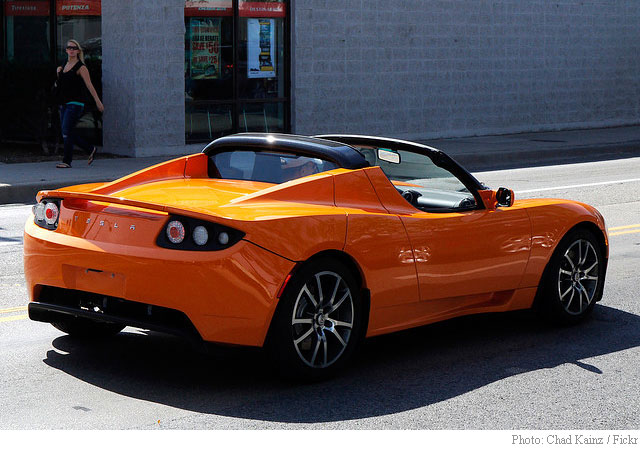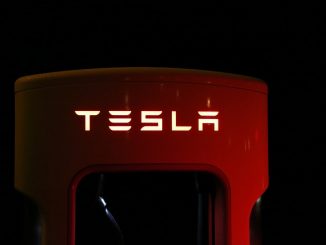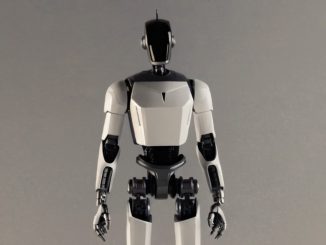Can Tesla Motors Inc (NASDAQ:TSLA) keep up with the competition? The electric car market has been dominated for quite sometime by the American carmaker but this will not be the case in just a few short years, according to Mark Spiegel of Stanphyl Capital on Monday’s edition of “Closing Bell.”
Spiegel said, Tesla bulls who say that the company is going to “rule the world of electric cars” are not doing their homework and that the company has “absolutely nothing sustainably proprietary, nothing yet it is losing a massive amount of money with zero direct long-range electric car competition.”
He added that soon, every carmaker in the industry would become a direct competitor for every product Tesla has, from charging, to Autopilot, to battery technology to cars.
“Starting in just a few months and into 2018 it’s going to be swarmed with long-range electric car competition. By 2021 every single manufacturer will have” an electric car. Tesla will go from zero direct competitors to 40 direct competitors.”
The veteran analysts noted that by 2018 or 2019, Mercedes-Benz would introduce four new electric car models while sports car maker Porsche and Audi will roll out two of their own. Meanwhile, other luxury carmakers, such as Jaguar and Bentley, will reportedly introduce their own electric cars.
On the mass market end, Ford (NYSE:F) is expected to launch two new electric car models while Volkswagen will roll out five. Spiegel said that other automakers, such as Hyundai and Toyota would release even more affordable electric cars.
Spiegel added that the comparisons made by Tesla bulls to other tech companies like Amazon.com (NASDAQ:AMZN) do not fit because “Amazon financed all of its expansion through internal cash flow during the early days of the company.”
In contrast, he said, “All Elon Musk knows how to do is incinerate cash.” Spiegel is referring to the Tesla CEO’s controversial megadeals and acquisitions, something that even investors are wary about.
“Tesla lost last quarter as a GAAP number, around $20,000 for every Model 3 it sold with a base price of $70,000. Even, when accounting for some capital expenditure and research and development figures, it still lost thousands of dollars per car. There is no way in the world they can build the Model 3 for a cost of anything less than maybe $45,000-high $40,000s,” Spiegel noted.
He finished by calling Musk, “the most deceptive CEO I have ever seen. The one credible thing he does say is he doesn’t care if Tesla stays in business, if he can electrify the world of cars.”
The analyst added that there is no practical way Tesla can continue on its spending spree, especially when it is trying to penetrate the mass car market, with the amount of money it loses for the production of a Model 3 car. Can’t say Spiegel does not have some really valid points.
- Bulenox: Get 45% to 91% OFF ... Use Discount Code: UNO
- Risk Our Money Not Yours | Get 50% to 90% OFF ... Use Discount Code: MMBVBKSM
Disclaimer: This page contains affiliate links. If you choose to make a purchase after clicking a link, we may receive a commission at no additional cost to you. Thank you for your support!




“Tesla lost last quarter as a GAAP number, around $20,000 for every Model 3 it sold with a base price of $70,000.”
As the Model 3 is not yet in production, you must be referring to the Model S or X. At an announced base price of $35K for a Model 3, Tesla would be losing less money per car.
There are two major reasons why the other car makers will fail to overtake Tesla by 2021: An established and widespread supercharging network, lower-cost battery technology, brand loyalty and diversification.
Tesla already has a proprietary nationwide network in place to allow coast to coast driving and the ability to fully charge within 30 to 45 minutes at each point, depending on how big a battery the driver opts to have. This proprietary charging network is free for current Tesla owners and will be available for a one-time fee to Model 3 owners. No car maker currently has a nationwide network of fast-charging stations along major highways, free or not, or do any of them have any concrete plans for such a network within the next five years.
Rather than invest in such a network, the old automakers are waiting on the US government to use taxpayer money to foot the bill. If the US government interference in private health care is any indication of how such a network will function, which has driven up costs offered fewer choices for the majority of consumers, many non-Tesla drivers will be left frustrated and stranded along major highways. These quick chargers will likely break down quite often, be poorly maintained, and have long lines. This poor driver experience for non-Tesla customers will translate as further proof that Telsa is the better brand and will only send early adopters of non-Tesla EVs over to Tesla.
http://www.hybridcars.com/ev-charging-corridors-coming-to-u-s-national-highways/
Tesla’s Gigafactory will cut the cost of its batteries to such a degree that other automakers will have a difficult time competing on a large scale. Tesla will be the largest lithium-ion battery producer by sheer volume in 2018, creating half of all lithium batteries in the world for any device, vehicle or otherwise. The new size and type of cells Tesla uses, which will be optimized for electric car use, will become the industry standard. Lower costs and better weight to power ratios for these batteries means a higher profit margin for Tesla along with better performance for its vehicles compared to the competition. This also gives Tesla the ability to diversify shortly after it fulfills the demands of it’s Model 3 by selling these cells at a cheaper price to other automotive companies than other lithium-ion battery producers.
Tesla also has something that many current automakers are starting to lose: brand loyalty. Much like Apple with the iPhone, Tesla has gained such a brand loyalty that consumers line up around the block for their product. 300,000 Model 3 reservations are hard proof of this loyalty, something that no other vehicle manufacturer has ever done. There will likely be other comparable electric vehicles on the market by 2018, but none of them will have the same number of sales that Tesla will enjoy. It would be surprising if all of the automotive companies combined were to sell 300,000 long range EVs between 2018 and 2021 and retain those buyers as loyal customers given the problems that will exist for non-Tesla drivers due to a lack of a reliable quick charging network and the cost of comparable battery technology.
So, no, Tesla will have paltry competition by 2018 and will likely not have equal competition even by 2021 due to the old automakers’ outdated thinking and execution of bringing innovation to the market; they will simply try to copy Tesla’s success. Eventually, the old automakers will overtake the long-range EV market share, as Samsung has done with Apple in mobile phones, but they will not knock Tesla out of the market by any means. Much like Apple, Tesla will have successfully diversified into other markets by this time, such as with EV battery manufacturing and energy storage solutions. Tesla will be around for decades to come.